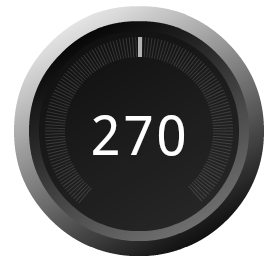Doesn’t open-source sometimes simply amaze us? Isn’t it a wonderful thing when a group distributed all over can come together to challenge a technology behemoth? It’s not quite David and Goliath but more similar to the meme of a school of fish chasing away the giant fish…and many of us can relate to that. Enough of that though; the folks at Spark.io were compelled to develop an open-source alternative, wifi-based thermostat after apparently being spurred on by Google’s game-changing acquisition of Nest. To add to it, it seems the device was developed from start to finish in a day.

Project Details
The details of the project were posted on the Spark Blog one day last week complete with downloads and even video demonstrations. The development is based on the Spark Core and their wifi development kit. The project was completed rather inexpensively (around $ 70 for the components) and for all intents and purposes seems to be a complete smart home device that is probably just the beginning.
The materials used in it’s construction are wood and acrylic, a HumidIcon sensor, standard LED indicator display and a Panasonic PIR motion detector lets the device know if the home is occupied or empty. The JavaScript web app is a fairly intuitive (seeing as it’s just a doorknob) one you turn to adjust the temperature. For do-it-yourself aficionado’s you can even develop your own control software.
The Implications
All that said, Google is Google for a reason and this device is not going to go head-to-head with Nest, but it is a beachhead of sorts for the open-source wifi smart home. What it does is demonstrate that the technology is really only limited by our imagination and capability. The fact that it is open source means that if you have the know-how for the key components, you can most definitely tap the community for improvements and enhancements.
Essentially the Spark Core is a fine piece of hardware whose design makes adding wifi as a component possible. It does the grunt work for your project, though it is very powerful and presents quite a few possibilities – still it’s packed with potential. Put a different way, the open-source community is quite resourceful and this might be the tip of the iceberg when it comes to the DIY smart home on the horizon. The best part about it really is that instead of waiting on the next groundbreaking development from an industry titan, you can get in on the fun yourself.





